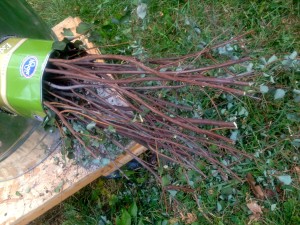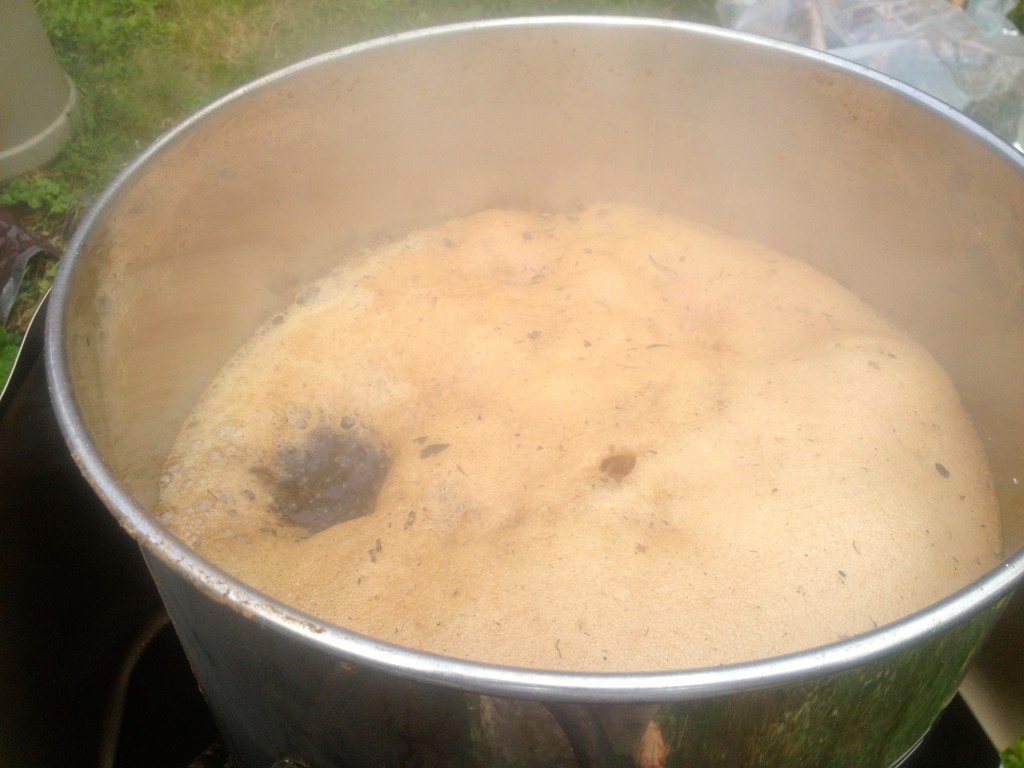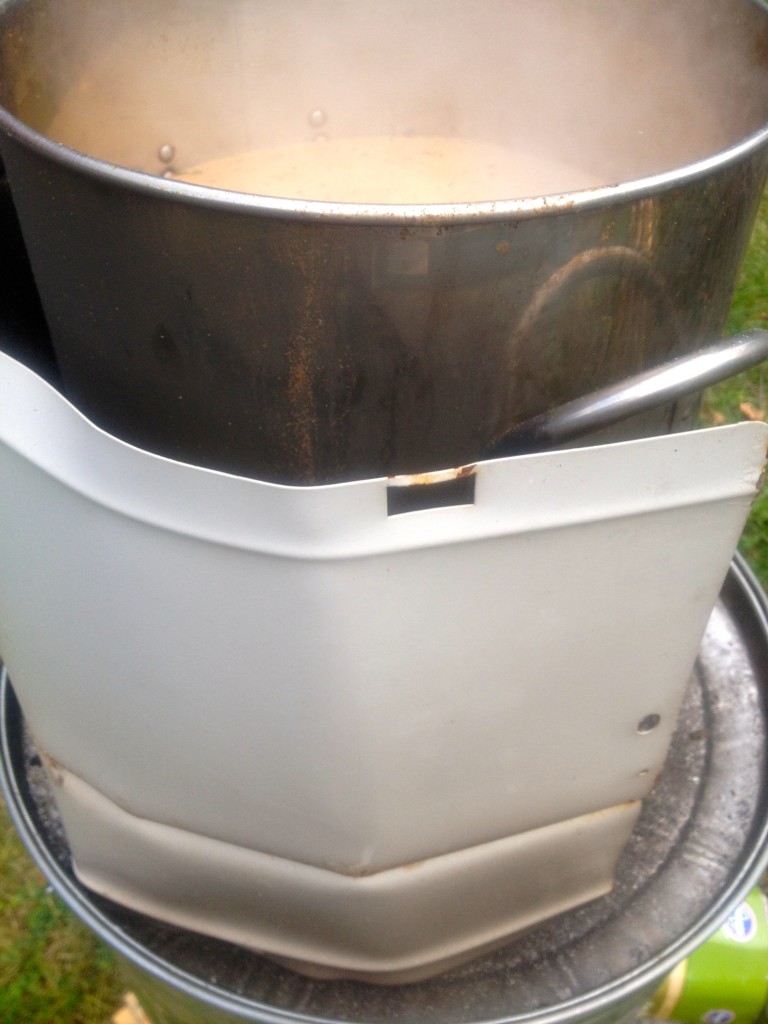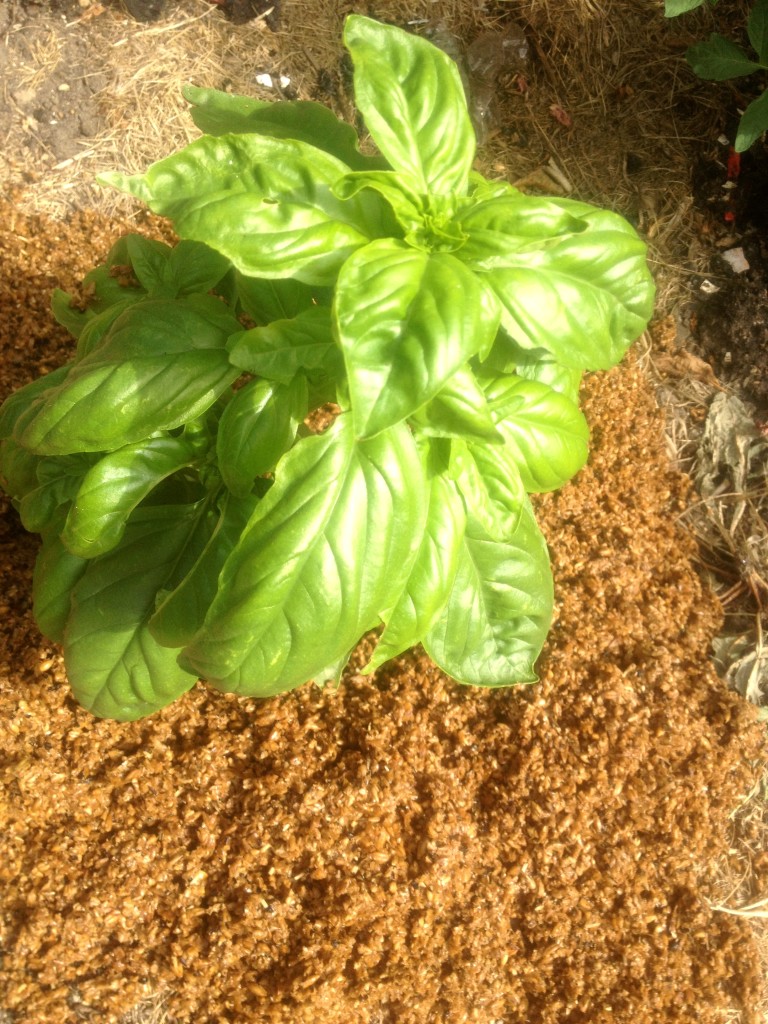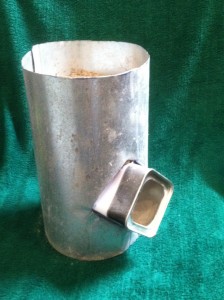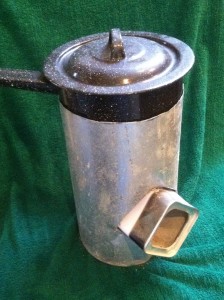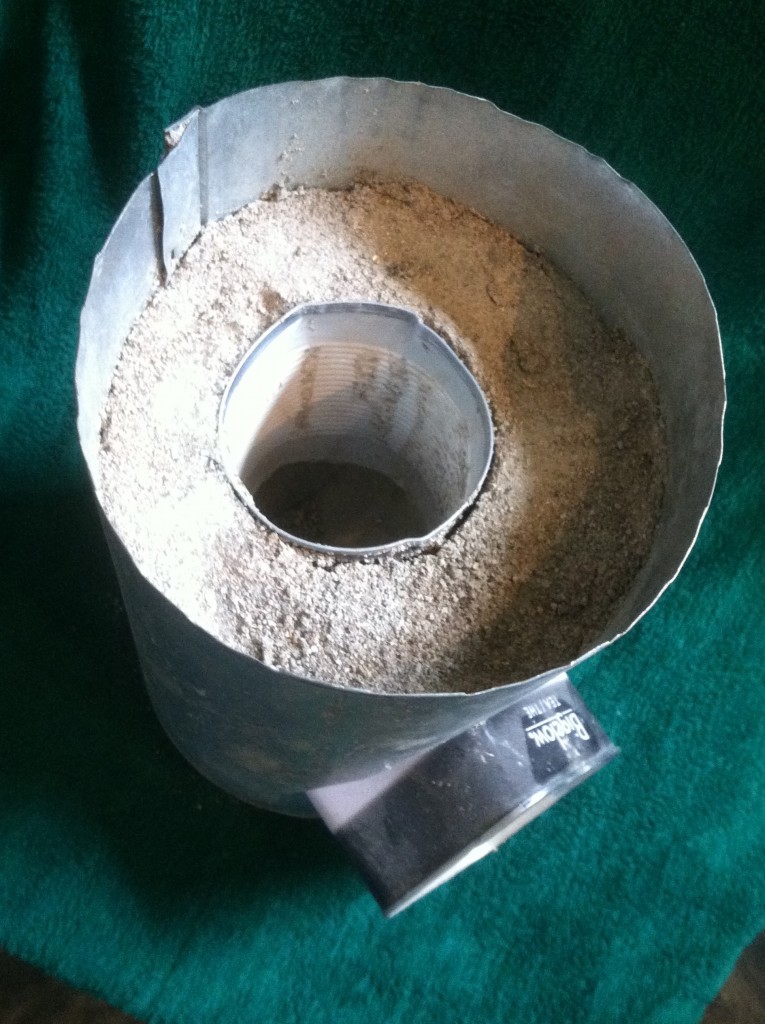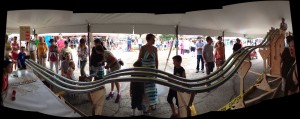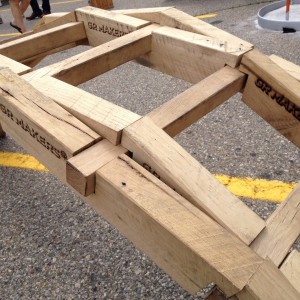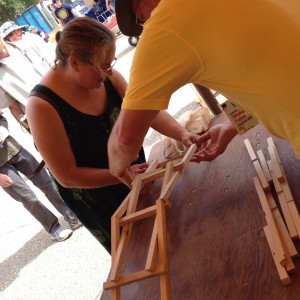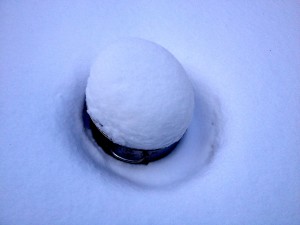
Make Ice (Beer) when the Snow Flies
The cold weather equivalent of “Make Hay While the Sun Shines” might very well be “Make Ice While the Winter Rages” and this is a sentiment a buddy of mine takes to his brew-house. When it’s cold, especially the Polar Vortex kind of cold we’ve been enjoying recently, he makes “Ice Beer,” or more specifically, he distills his concoctions using the fun fact that water and alcohol freeze at different temperatures.
Before going farther, I gotta level with y’all that the way I read the law, this process, ice distillation, is as illegal as traditional distillation for the home-brewer. I am presenting this technique mostly for its gosh-darned ingenuity, rather than encouraging its adoption. Legal hassles are NOT an effect way to spend one’s pennies and so can not be endorsed by greenhomebrewing. Jus’ sayn’.
Freeze distillation is the magical process whereby, say, hard apple cider transforms to apple jack. If one used traditional evaporative distillation, hard cider turns into brandy. The difference is important. With my buddy’s freezing set up, only the water is removed thus concentrating anything that can be dissolved in alcohol. You’ll end up drinking what’s left in the pot. Brandy is aristocratic; jack is a bit more gritty.
His set-up is stupid-simple which is great because the day I inspected it, the wind-chill was double-digits below zero. He started with a large stainless steel pot that he washed clean. No need to sanitize, he reasons, when working with temps that low and higher alcohol concentrations. This pot absolutely MUST have a lid, he warned. Then he poured into this 10-gallon pot the dregs of several beers. For this winter’s attempt, he was combining the bits of several different IPAs that had languished on the bottom of kegs. They were taking up space in his kegerator and he figured that they likely had a high alcohol content to counteract the hops. Cover the pot and leave it overnight.
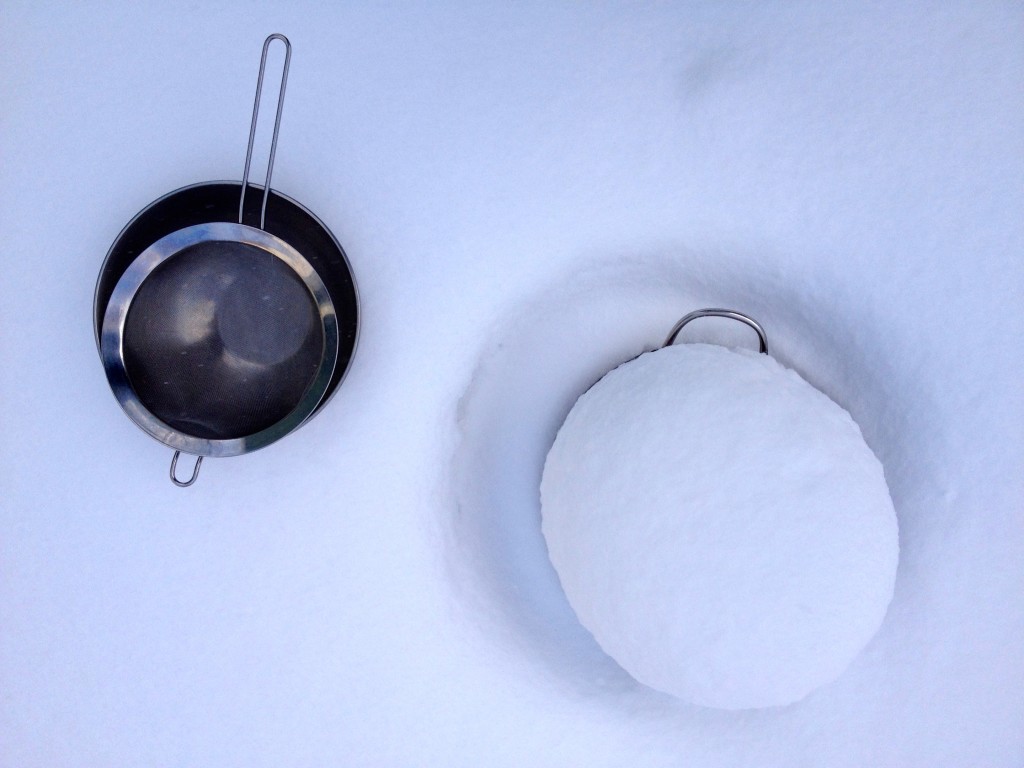
Tools of the Trade
Snow had mounded over the top of the lid on the morning I accompanied him. He carried a fine sieve and a metal bowl and I held the lid while he strained out the frozen water. I gotta say the ice was rather interesting, forming irregular flakes rather than a solid chunk, a phenomenon called slip ice. He saved the ice flakes in the metal bowl because at this point in the process, he explained, they probably are more like a beer slushy than pure frozen water. The straining was mercifully quick and we were back in his warm kitchen within minutes.
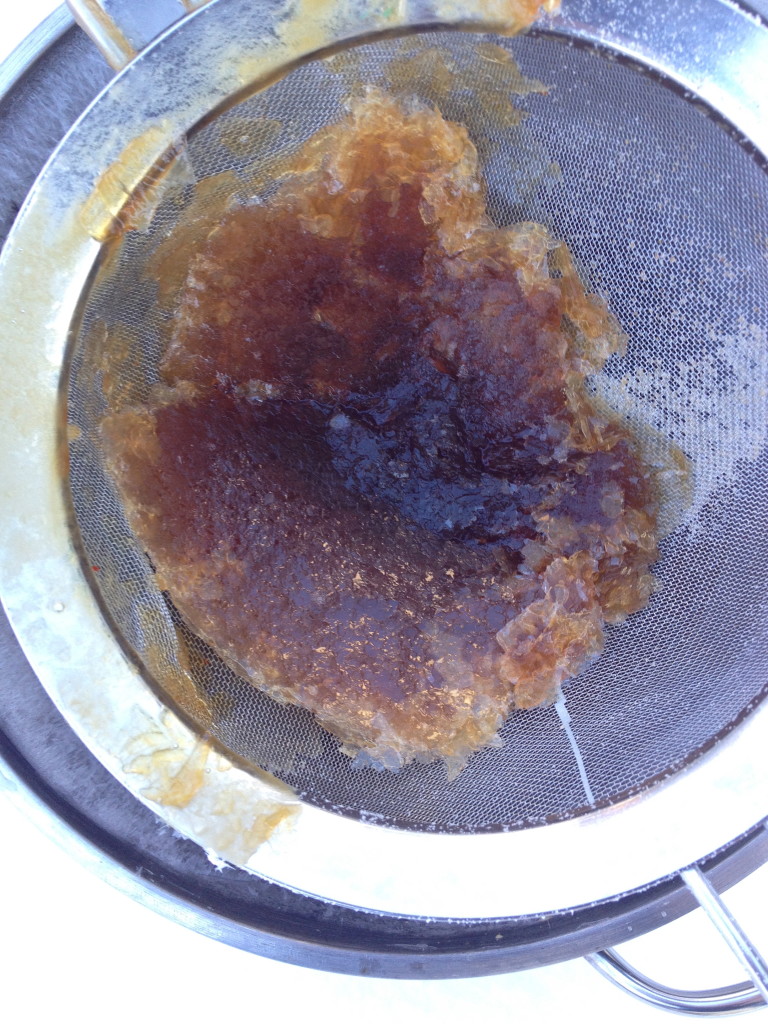
“Slip Ice” aka “Beer Slushy”
“That wasn’t a 10-gallon pot,” I noted.
“I’ve already transferred it down,” he explained.
“Exactly how much water do you remove from this stuff?”
He grinned. My buddy grins whenever there’s a question he can’t answer.
He poured the beer slushy into a quart Mason jar, nearly filling it. I ran calculations, at a quart removed every day, how many days would it take to reduce 10 gallons to… whatever. If it didn’t bother him, it didn’t bother me.
My buddy cracked open some Apple Jack he bottled ten years ago and gave me a sample. It was crystal clear, the color of pale straw, and gave off the slightest aroma of apples. It was remarkably smooth on the tongue, dry with only a slightly harsh bite at the finish. And it was deceptively potent. “How strong is that stuff?” I asked at the bottom of my glass but he only grinned. I am a closet number-nerd, and I would have appreciated something quantifiable.
Once the slushy melted sufficiently, he poured me a taste. Sweet Merciful Falstaff, it was bitter! I once was a hop-head, back in the last millennium, and the search for two-fisted bitters drew me into home-brewing… but those days are past. My friend explained that at least one of the batches he used was marred by an over-abundance of Magnum in the mix. I suspect that the freeze distillation was rather enhancing the hop punch as well.
“That’s… ah, chewy,” I said, remembering hop tea.
He grinned.
“You think that will mellow out with age?” I had to ask.
My buddy grinned and shrugged, clearly unconcerned. “I’ll invite you back in ten years to give it a try.” He’s got a point though. Why not experiment, if it was beer he wasn’t drinking anyway and especially since it’s not costing anything to transform it–that is, until the revenuers haul his butt to jail.
As I trudged home through the Winter Wonderland that is Michigan in January, I turned the process over and over in my mind, trying to come up with something legal I could use it for. Desalinization, I suppose, if I wasn’t surrounded by the largest bodies of fresh water in the world. I’ll keep pondering and post whatever I come up with.

. No longer must we wait for a book to be published on a specific brewing topic — though there are a staggering number of books out there on so many different facets of brewing. These posts will document my investigations and adventures with green home brewing. Hope you come along for the ride.

